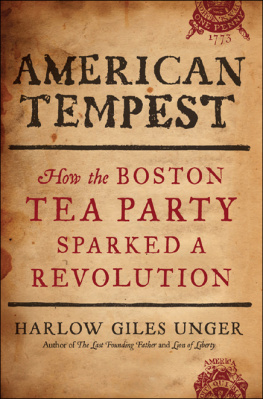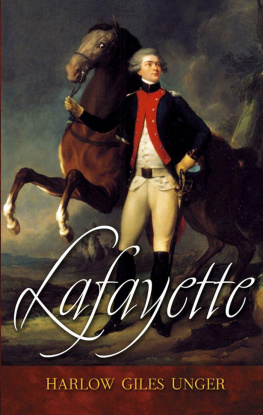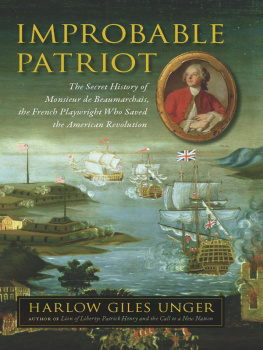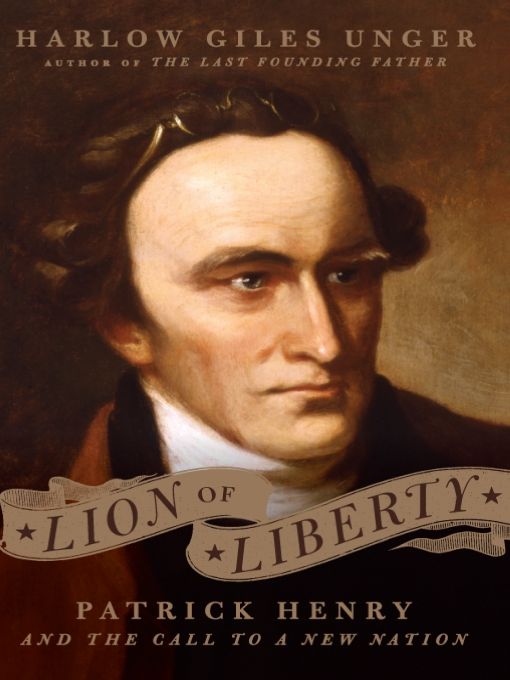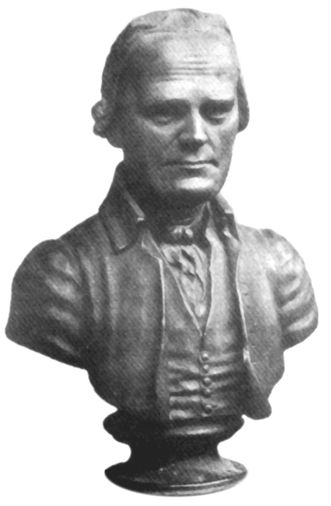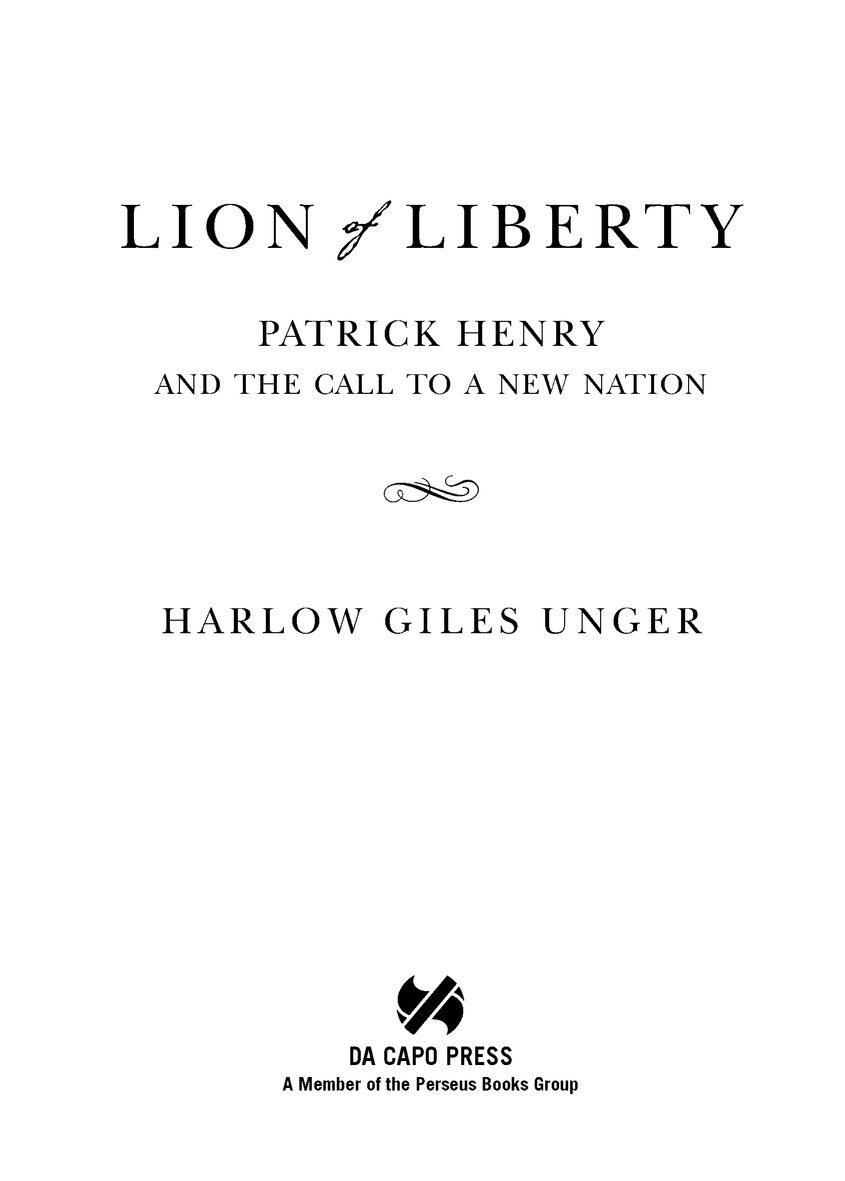Table of Contents
Clay bust of Patrick Henry by
itinerant Italian sculptor in 1788.
(RED HILL MUSEUM COLLECTION, PATRICK HENRY
MEMORIAL FOUNDATION, BROOKNEAL, VA)
To my friend and mentor
John P. Kaminski
Acknowledgments
My deepest thanks to Karen Gorham and Edith C. Poindexter of the Patrick Henry Memorial Foundation at Patrick Henrys Red Hill home, in Brookneal, Virginia. Karen Gorham is director at Red Hill, and Edith Poindexter was, until her recent retirement, curator and genealogist there for many years. Both are superb historians and were generous in sharing their encyclopedic knowledge of Henry, his family, and his times. In addition, both ladies were gracious enough to vet the final manuscript to ensure its accuracy. Ms. Poindexter also shared important research materials that shed new light on Patrick Henrys life and family, while Ms. Gorham provided me with several key illustrations and a number of essential research materials. I must add, as well, that both ladies deserve the thanks of all Americans for their important work at the Patrick Henry Memorial Foundation in Brookneal, Virginia.
I am also most grateful to John P. Kaminski, one of Americas premier (and busiest) scholars, who, with his usual generosity, was kind enough to vet this manuscript. Historian, author, educator, lecturer, documentary editor, and patriot, John P. Kaminski is founder and director of the Center for the Study of the American Constitution. He is also responsible for producing one of the nations most important historical treasures: The Documentary History of the Ratification of the Constitution, and I am honored by his friendship.
I want to express my deepest thanks as well to the many gracious folks at my publisher, Da Capo Press of the Perseus Books Group, who work so hard and expertly behind the scenes and seldom receive public acknowledgment for the beautiful books they help produce and market. Among them are Lissa Warren, Director of Publicity; Kevin Hanover, Director of Marketing and the wonderful sales force for the Perseus Books Group; Sean Maher in marketing; assistant editor Jonathan Crowe; project editors Renee Caputo and Cisca Schreefel; copy editor Anais Scott; proofreader Laura Keenan; indexer Robie Grant; and designer Trish Wilkinson.
Finally, my deepest thanks to my editor, Robert Pigeon, executive editor at Da Capo Press, for the time and effort he put into improving this manuscript, and to my friend and literary agent, Edward W. Knappman, of New England Publishing Associates.
Authors Note: Spellings and grammar in the eighteenth-century letters and manuscripts cited in this book have, where appropriate, been modernized to clarify syntax without altering the intent of the original authors. Readers may find the original spellings in works cited in the endnotes and bibliography at the back of the book. Regarding the depictions of Patrick Henry, the wide and sometimes incongruous differences in the portraits and sculptures result in part from the degenerating effects of malaria as he aged. A second reason, however, is that Henry only sat for four portraits during his lifetimetwo miniatures, the sketches by Latrobe on page 250, and the clay bust on the frontispiece. Subsequent portraits shown in this book were made long after his death from the two miniatures and include distortions by artists who never actually saw Henry. The clay bust, however, was considered a perfect likeness [at the time], according to Patrick Henrys friend, Judge John Tyler.
Chronology
May 29, 1736. Patrick Henry born in Hanover County, Virginia.
1752. Opens store with brother William; fails one year later.
1754. Marries Sarah Shelton; begins farming.
1757. House burns down; farm fails; he opens a new store.
1759. Economic depression closes store; he moves into tavern; tends bar, studies law.
1760. Passes law exams; begins practice.
1763. Gains fame in Parsons Cause case.
1765. Elected to House of Burgesses; Stamp Act Speech, May 29.
1767. Moves to Scotchtown plantation; wife Sarah suffers depression.
1774. Delegate to Continental Congress.
1775. Liberty or Death speech, March 23; Virginias commander in chief; wife Sarah dies.
1776. Resigns military command; returns to state assembly; Virginia declares independence; helps write state constitution; champions religious liberty and end to slave trade; elected Virginias first governor; leads war effort.
1777. Elected to second term as governor; organizes Virginia Navy; sends troops against British in Illinois, Indiana, the Carolinas; marries Dorothea Dandridge.
1778. Elected to third term; exposes plot to oust Washington; uncovers corruption behind Valley Forge miseries.
1779-1784. Leader, Virginia Assembly; champions restoration of British trade, return of Tories; intermarriage of whites and Indians.
1784. Elected governor a fourth time.
1785. Threatens secession over Mississippi River navigation rights; reelected governor; rejects stronger confederation; supports farmer tax protests; nation faces anarchy.
1786. Daughters marry; his views on women, marriage, slavery; declines another term as governor.
1787. Refuses to attend Constitutional Convention; prophesies tyranny under national government.
1788. Leads fight against ratification; demands Bill of Rights and limits on federal powers; resumes law practice.
1791. Quits politics for full-time private law practice; landmark British Debts Case.
1792. Land speculations; Yazoo scandal.
1794-1796. Declines appointments as U.S. Senator, Secretary of State, Chief Justice of the U.S. Supreme Court, and other federal posts.
1799. Returns to politics; recaptures Assembly seat; Dorothea gives birth to her eleventh childhis seventeenthlives four days.
June 6, 1799. Patrick Henry dies at sixty-three. Buried at Red Hill, Charlotte County, Virginia.
Introduction
As this government stands, Patrick Henry thundered, I despise and abhor it.... I speak as one poor individualbut when I speak, I speak the language of thousands. If I am asked what is to be done when a people feel themselves intolerably oppressed, my answer is... overturn the government!
Henrys roar of exhortation was not aimed at Britain; it was aimed at the United States, as the thirteen former British colonies considered whether to adopt a new constitution. As he had done a decade earlier in his famed cry for liberty or death, Henry once again roared for the rights of free men to govern themselves with as few restrictions from government as possible. His roar would reverberate through the ages of American history to this very day.
Known to generations of Americans for his stirring call to arms, Give me liberty or give me death, Patrick Henry is all but forgotten as the first of the Founding Fathers to call for independence, for revolution against Britain, for a bill of rights, and for as much freedom as possible from governmentAmerican as well as British. If Washington was the Sword of the Revolution and Jefferson the Pen, Patrick Henry more than earned his epithet as the Trumpet of the Revolution for rousing Americans to arms in the Revolutionary War.


